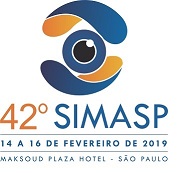Dados do Trabalho
Título
WHITE DOT SYNDROME IN PATIENTS WITH PRIOR OCULAR TOXOPLASMOSIS
Introdução
Multiple evanescent white dot syndrome (MEWDS) was first described in 1984 by Jampol et al. It is characterized by unilateral diminished vision and enlargement of the blind spot and has a predilection for young, healthy, myopic females. Retinal findings include macular granularity, multifocal, small white lesions concentrated in the paramacular, peripapillary, and midperipheral fundus, as well as posterior vitreous cells. Recent studies have shown that MEWDS affects predominantly the outer retina, centered at the ellipsoid zone (EZ) and interdigitation zone (IZ), with some changes extending into the outer nuclear layer (ONL). The pathogenesis of MEWDS is unknown, although an immune-mediated process in genetically predisposed individuals has been postulated. Toxoplasmosis is the leading cause of infectious posterior uveitis in the world, accounting for 80% of cases in some regions. Although toxoplasmosis chorioretinitis usually has a self-limited course, it can lead to irreversible visual loss, particularly when the macula and optic nerve are involved. In 2011, Vance et al. reported a unilateral white dot syndrome occurring in a healthy 27-year-old woman 1 month after documented resolution of recurrent toxoplasmosis chorioretinitis involving the same eye. Herein, we report 2 similar patients with retinal findings resembling MEWDS in eyes with evidence of prior ocular toxoplasmosis.
Métodos
Interventional case report
Resultados
Two young healthy females with longstanding chorioretinal scars due to toxoplamosis presented with acute visual symptoms and clinical findings resembling MEWDS. Both patients also showed inactive scars in both eyes and had positive serological testing for toxoplasmosis. Unilateral deep gray-white retinal lesions corresponding to disruption of the outer retinal bands on OCT were scattered throughout the posterior pole and were more numerous around the chorioretinal scars.
Conclusões
We report 2 new cases of a white dot syndrome resembling MEWDS in patients with prior ocular toxoplasmosis. Further study is needed to determine whether this white dot syndrome is causally related to the presence of prior ocular toxoplasmosis or merely a coincidental occurrence.
Palavras Chave
choroiditis, autofluorescence, angiography, inflammation, tomography, toxoplasmosis, uveitis.
Arquivos
Área
Retina
Instituições
Hospital de Olhos Sadalla Amin Ghanem - Santa Catarina - Brasil
Autores
Fabio Bom Aggio, Tiago E F Arantes, Evandro L Rosa, Mário J Nóbrega, K Bailey Freund
